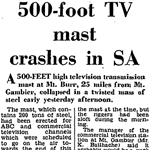 The launch of SES8 — South Australia’s first regional commercial station and now part of the WIN network — took place 50 years ago today, 25 March 1966. But the station’s debut was meant to happen much earlier.
The launch of SES8 — South Australia’s first regional commercial station and now part of the WIN network — took place 50 years ago today, 25 March 1966. But the station’s debut was meant to happen much earlier.
The channel had originally planned to launch in November 1965 but an accident during construction of the transmission tower on Mount Burr six weeks earlier saw the 150 metre (500 foot) high mast collapse.
The incident was lucky to have had no serious casualties as workmen were at the site when the collapse happened, though none were on the tower at the time. Only one worker was reported to have injured an ankle while running from the tower. The roof of the transmission station and two nearby cars were damaged by the snapped guy ropes as the tower collapsed into a pile of twisted steel.
The mast was to serve both SES8 and ABC‘s planned local channel ABGS1. ABC launched its channel in December 1965 via a temporary transmitter while the permanent mast at Mount Burr was being restored.
SES8 eventually made its first transmissions on Monday, 21 March 1966 and was officially opened on the following Friday night, 25 March 1966. The first program was Tonight’s The Night — a 25-minute special including the official opening speeches and introductions to the station’s personalities. The new channel was declared officially open by Dr Jim Forbes, the local federal member and the Minister for Health.
The opening program was followed by the station’s first news bulletin — five minutes of news headlines. The special Peter Paul And Mary In Australia, recorded in concert at Melbourne’s Festival Hall, was followed by the 1958 movie The Big Country, starring Gregory Peck, Jean Simmons, Charlton Heston and Carroll Baker. SES8 signed off from its first night with a two-minute epilogue.
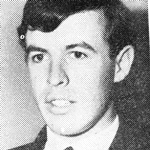 In its early days SES8 broadcast for around five hours each night — featuring a mix of locally-produced and largely imported programming. Local production from the Mt Gambier studios included Children’s Time, a half-hour weekday program hosted by Andrew Noblet (pictured), an 18-year-old cadet journalist from Adelaide, in front of a studio audience. Early news coverage comprised a nightly half-hour bulletin and a ten-minute update at the close of transmission each night. SES8’s first newsreader was Lewis Hobba, a local chartered accountant who had also been a newsreader for local ABC radio. George Kay, well known in the district as a footballer and cricketer and as a radio commentator, presented the sports reports.
In its early days SES8 broadcast for around five hours each night — featuring a mix of locally-produced and largely imported programming. Local production from the Mt Gambier studios included Children’s Time, a half-hour weekday program hosted by Andrew Noblet (pictured), an 18-year-old cadet journalist from Adelaide, in front of a studio audience. Early news coverage comprised a nightly half-hour bulletin and a ten-minute update at the close of transmission each night. SES8’s first newsreader was Lewis Hobba, a local chartered accountant who had also been a newsreader for local ABC radio. George Kay, well known in the district as a footballer and cricketer and as a radio commentator, presented the sports reports.
The South East South Australian branch of the Christian Television Association presented a weekly religion program, aimed at all denominations, every Sunday afternoon at 5.30pm.
 |
 |
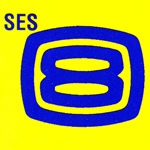 |
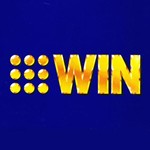 |
American programming included Combat, Lone Ranger, Rawhide, Disneyland, The Patty Duke Show, Perry Mason, Danger Man, My Three Sons, The Phil Silvers Show, The Dick Van Dyke Show, The Beverly Hillbillies, The Virginian and Bonanza. Australian programming in the early days didn’t really extend much beyond Bandstand, quiz show Pick A Box and game show It Could Be You.
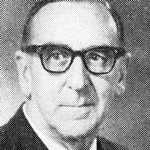 The station launched with a total staff of 24… and boasted six women on the payroll. Keith Bailhache, formerly of GTV9 in Melbourne, was the first general manager. Another ex-GTV9 manager, Des Ford, was SES8’s first program manager, who set out the new channel’s early program objectives: “We want to build a local image by not only covering local newsworthy events but by giving viewers programs they like. In other words, a program may be considered old by city standards, but if SES8 viewers want to see it, we’ll screen it. Don’t get the idea, however, that we’ve bought up old material — a lot of our programs are new — but we’re going after popular-appeal shows. And we’ll try and dodge the heavy violence. We want family viewing.”
The station launched with a total staff of 24… and boasted six women on the payroll. Keith Bailhache, formerly of GTV9 in Melbourne, was the first general manager. Another ex-GTV9 manager, Des Ford, was SES8’s first program manager, who set out the new channel’s early program objectives: “We want to build a local image by not only covering local newsworthy events but by giving viewers programs they like. In other words, a program may be considered old by city standards, but if SES8 viewers want to see it, we’ll screen it. Don’t get the idea, however, that we’ve bought up old material — a lot of our programs are new — but we’re going after popular-appeal shows. And we’ll try and dodge the heavy violence. We want family viewing.”
With its transmission mast close to the Victorian border, SES8 had a coverage area extending across to Victorian towns including Portland and Hamilton. Broadcasting across two timezones, SES8’s first logo was a number ‘8’ made up of two clock faces — one showing South Australian time and the other Eastern Standard Time.
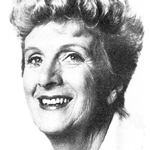 Only a year after its inception, SES8 launched its own daytime show, Wednesday Woman. The program was initially hosted by Catherine Watson and later Graham Gilbertson, who went on to become SES8’s managing director. But the show’s longest serving presenter was Margaret Watkins (pictured), who hosted over 2000 episodes before retiring in 1987. The program, which became Woman’s World, continued to run for several more years — making it one of the longest running daytime programs on Australian television.
Only a year after its inception, SES8 launched its own daytime show, Wednesday Woman. The program was initially hosted by Catherine Watson and later Graham Gilbertson, who went on to become SES8’s managing director. But the show’s longest serving presenter was Margaret Watkins (pictured), who hosted over 2000 episodes before retiring in 1987. The program, which became Woman’s World, continued to run for several more years — making it one of the longest running daytime programs on Australian television.
SES8 didn’t take long to become a successful operation. Within its first two years it had expanded its production portfolio to include a weekly opinion program, a student debate series and replacing Children’s Time with the longer Fun Fair. Sports commentator George Kay hosted a Sunday afternoon sports review. South East Telecasters, the station’s parent company, took only two years to record its first annual profit — $33,585 in the 1967/68 financial year.
By the end of the 20th century SES8 and Riverland station RTS5A had been bought out by regional network WIN. The two South Australian stations were re-badged WIN and were soon to expand their program offering to a secondary channel in their respective regions. WIN Ten was launched in 2004 as an affiliate to the Ten Network, with the heritage SES8/RTS5A stations focusing largely on Nine Network programming.
When WIN was having difficult negotiations with Nine over its program supply agreement in 2007 it made the decision to switch SES8/RTS5A to a Seven Network relay, essentially chopping any Nine programming off the schedule. Viewers in the region were to be denied access to Nine’s content until WIN had launched a Nine Network relay on its digital signal to complement WIN Ten and the main channel’s Seven output.
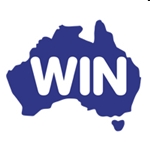 With the commercial TV monopoly in the Mount Gambier and Riverland regions, WIN in South Australia now provides local transmission of ten channels, including most of the channels from all three metropolitan networks. But all this choice to a small regional market came at a price — local content was deemed too expensive and after a series of cutbacks WIN finally pulled the plug on local news services from SES and RTS in 2013.
With the commercial TV monopoly in the Mount Gambier and Riverland regions, WIN in South Australia now provides local transmission of ten channels, including most of the channels from all three metropolitan networks. But all this choice to a small regional market came at a price — local content was deemed too expensive and after a series of cutbacks WIN finally pulled the plug on local news services from SES and RTS in 2013.
Source: Canberra Times, 5 October 1965. The Age, 5 October 1965. The Age, 22 March 1966. TV Times, 6 April 1966. Canberra Times, 24 October 1968. TV Radio Extra, 18 July 1987.
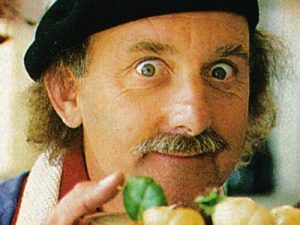
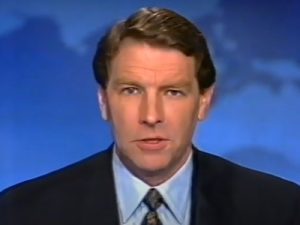
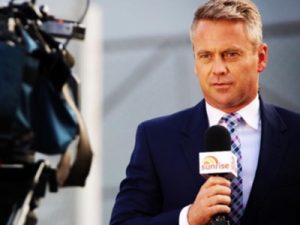
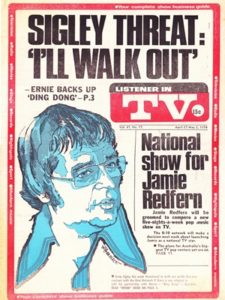
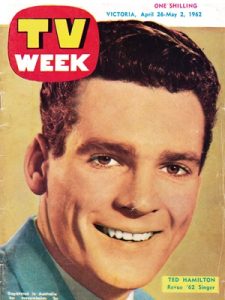
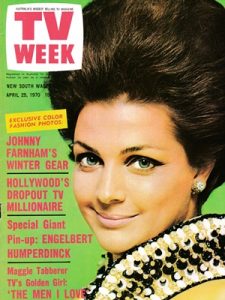
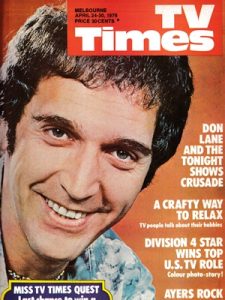
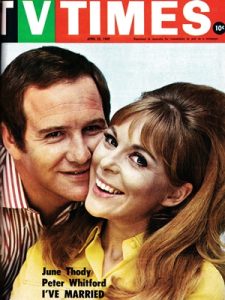
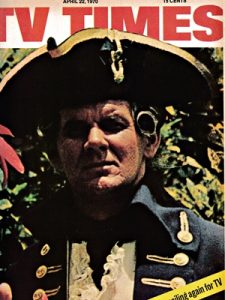
HAPPY 50TH BIRTHDAY WIN-SA!
As a frequent holiday-maker in Mount Gambier during much of the 1990s and 2000s, I’ve been able to see (during that time) the contrast of such a country station going from homely and fiercely independent station (even in 1998) to a totally different one at the mercy of a network giant as it is today. It is fun, though, to look back at the 1990s SES8 – the News, Cartoon Connection, Community Classifieds, Woman’s World/At Home and all the continuity bits in between – through old off-air video recordings.
Station SES-Mt. Gambier should be an autonomous regional broadcaster, WIN has absolutely NO business gobbling up regional TV stations in SA, Qld, Tasmania or Victoria. WIN should instead stick to its own little corner of Australia, south-eastern NSW and its hometown, Wollongong! WIN is far to GREEDY for its own good! WIN should follow the example of Station NBN-Newcastle, which has NOT sought to gobble up regional stations outside its designated coverage area of Newcastle/Hunter Valley, New England and NSW North Coast. So, if it were still Station SES-Mt. Gambier, then it would be Happy 50th! But when SES got gobbled up by greedy WIN, there’s no cause to celebrate, only to lament the loss of local identity.
WIN, who were acting well within the ownership limits set by the government, wouldn’t have bought the station if it didn’t have a willing seller. To be fair to WIN they did continue local news services at SES and RTS for years even though there was no obligation for them to do so in regional SA. Losing the local news is a big loss, absolutely, but give the viewers the choice of local content or multiple channels (and lots of them), they’ll pick more channels every time.
Interesting that the commercial monopoly model forced upon SES and RTS as an alternative to competition with aggregation was intended to save local television production and jobs. It hasn’t happened like that.
WIN can expand over overseas as prime has already done so
Sorry left out most important thing happy birthday channel 8
Sorry I have to disagree with Neil’s comment even though it’s in the past WIN never gobbled up anything just a new identity
The point I was making is that WIN should’ve stayed within their south-eastern NSW service area and left all other stations outside NSW ALONE! I looked on their website and was disgusted to see their location and postal address has been moved to Kingston in the ACT when it should be in the city where WIN was established, Wollongong. Moving operations to another location is a blatant betrayal of the region that gave the station support in its early days, it shows gross ingratitude to the people and city of Wollongong.
And this brings me to something which hasn’t shown up(possibly ditched by moderator)…. Wishing happy birthday to a channel? Redundant! Wish happy birthday to a station, definitely, If SES-Mt. Gambier was still an autonomous, totally locally-owned station, they’d have good reason to celebrate, but not now they’re owned by outside interlopers. The channel? Then in analogue, as now in digital, the channel is nothing more than a chunk of spectrum space and as such, is of no importance whatsoever.
yes Neil, it was ditched because I did not wish for another post to be taken over by the same comments that you’ve done many times before, but I am only allowing this one through to address your point re: WIN. I don’t know your source for seeing that WIN is moving HQ to Canberra but its corporate head office is in Wollongong and WIN’s production of news bulletins for NSW and VIC is based in Wollongong. (the regional Victorian bulletins have only just migrated to Wollongong this year). In fact, WIN’s Kingston site in Canberra was reported to be planned to sell off as they no longer need a large premises as studio production is no longer conducted there.
Here’s a question pre digital era would Pakenham picked up Gippsland channels my guess i would say so
My guess would be yes up until the late 70s as GLV10 reached well into Melbourne’s south east suburbs. The change to GLV8 may have limited this reach due to being between Channels 7 and 9.
ahh ok thanks Andrew M as since digital has came into being Pakenham relies now on Melbourne Channels
I make these comments because I want people to understand that it’s the STATION which creates the programmes we see, and employs the myriad of people with various skills to do so. The channel is, was, and always will be of zero importance to the identity of the station as it was never more than the carrier frequency on which the station’s signal was transmitted. Years ago, Electronics Australia(now defunct) would publish in its February issue, a list of all the TV stations in Australia, and new Zealand, plus a list of translator installations(New Zealand, because of it’s geographical size, didn’t need as many and in any case I think only the NZBC stations were shown) As well as this there was a list of the channel frequency ranges for each of the 13 Australian, and 9 NZ channels. I always believed, and still do, that Australian TV stations(other than regionals) are hiding their identities. That’s all I’ll say on this matter.
Just keep in mind that just because you insist something doesn’t necessarily make it so. There is more than one definition of the word “channel”. Since TV began the words station and channel are essentially interchangeable. People (and networks) still refer to Channel names (e.g. Channel 7, Channel 9, Channel 10, even Channel 2) even though they no longer occupy the physical spectrum where that number is derived from. It’s a branding protocol that has been that way with broadcasters, and viewers, for 60 years.
Also keep in mind that in other countries various networks use the word “channel” even though it bears no relation to the physical broadcasting frequency. e.g. Channel 4 and Channel 5 in the UK are named because they are the 4th and 5th networks, not because they ever broadcast on channel 4 or 5 (as all UK television was UHF based since the conversion to colour).
But you’ve made this point repeatedly Neil and I trust this will be the last we hear of it.
Reading the above article, particularly near the end, I find it utterly disgusting that an interloper like WIN, carries ALL THREE capital city stations, plus their supplementary platforms into the Mount Gambier region…. A MONOPOLY! This is indeed a disgraceful situation as too much media is ending up in too few hands as it is, and will get far worse as a result of Turnbull’s treasonous “media reforms”. This country’s media landscape is a pitiful mess!
Monopoly Multi-channel services, as happens in South Australia, were an alternative for smaller markets that could not sustain competition via aggregation but would allow viewers to have a choice of services comparable to the capital cities. Southern Cross are doing much the same in its South Australian markets of Spencer Gulf and Broken Hill (NSW) where it has a monopoly and broadcasts a range of channels. WIN is also doing the same thing in Griffith NSW.
It seems you hate the concept of aggregation but you also hate the alternative? And the only other alternative would be to go back to one channel in each town which in 2016 is an impossible thought.
The best method would’ve been to keep the incumbent(original) station in the market, then add one new locally-owned station into the market in opposition. The advertising dollar would only be stretched two ways rather than three. Regional markets are not like metro markets, there’s not the same amount of advertising revenue to go around, so just having two competing stations rather than three, would take off the pressure on that advertising dollar. And, if the stations retained their autonomy and were not tied to the metros, then the metro stations would have to pitch their best shows to the regional stations in the hope that one or the other would take up the show(Australian Television Network pitches new country copper show, Blue Heelers to regional stations, NBN knocks it back but New Hunter Television[hypothetical station name] picks it up and it becomes a hit with Newcastle audiences, get my drift?) Fast-forward to the digital era and the two independent stations now have supplementary platforms on which they can programme more shows that they could not do under the old analogue system, and still the advertising dollar is only stretched two ways.
Neil You have made your point let’s move on shall we
At least I offered an alternative to the Bob Hawke “brain-fart” called regional TV Market Aggregation!
Not necessarily a sustainable one, however. Many of these markets would not be able to have sustained two local competing operators without falling into a de facto aggregation model as financially struggling channels would have inevitably been bought out by neighbouring groups.
I guess SA does finish at the foothills ! It is disappointing when the weather is given on Today Tonight it finishes half way down the state as if the south east doesn’t exist anymore. This is what our state government thinks and now so does our TV station .
it does feel that way down here sometimes
Referring back to shared markets.
Warragul and Pakenham receive Melbourne and Traralgon reception more than adequately and so does a lot of the Western Port side of the Mornington Peninsula.
As a child growing up in Somerville on the Peninsula you could pick up GLV 8/10 on an indoor antenna quite clearly as well as Melbourne.
I now live in Hastings and I have a small VHF antenna (Melbourne and line of sight to Mount Dandenong) and a small UHF Band IV antenna with a small UHF masthead amplifier and I get great reception from both stations. Why do I watch Gippsland ? I LOVE the local news service and I know it`s produced in Wollongong,
There are lots of shared markets still.
SES-8 had bought out RTS-5A in the 1990s, so another way of doing things could be that SES took the Seven affiliation, RTS took the Nine affiliation, and they both shared Ten programs. Then Mt. Gambier would get a relay of RTS and the Riverland would get SES. Later, a digital licence could be awarded for Ten programming. That way, Regional SA could get all three metros whilst retaining local content. Ah well, it’s too late now…